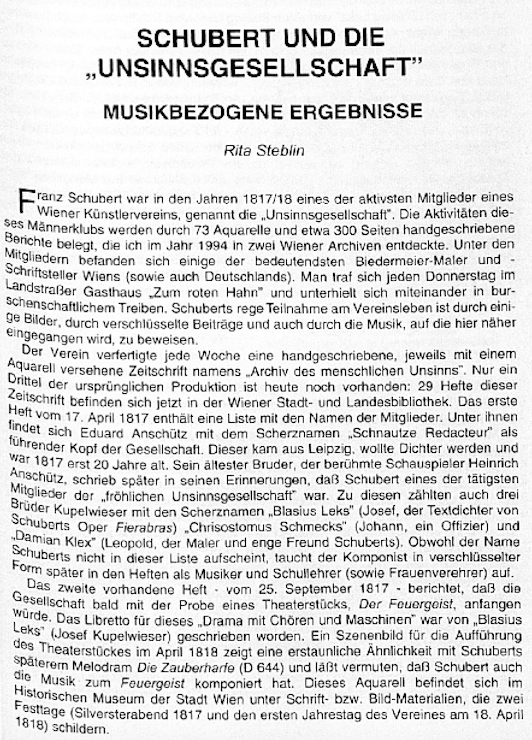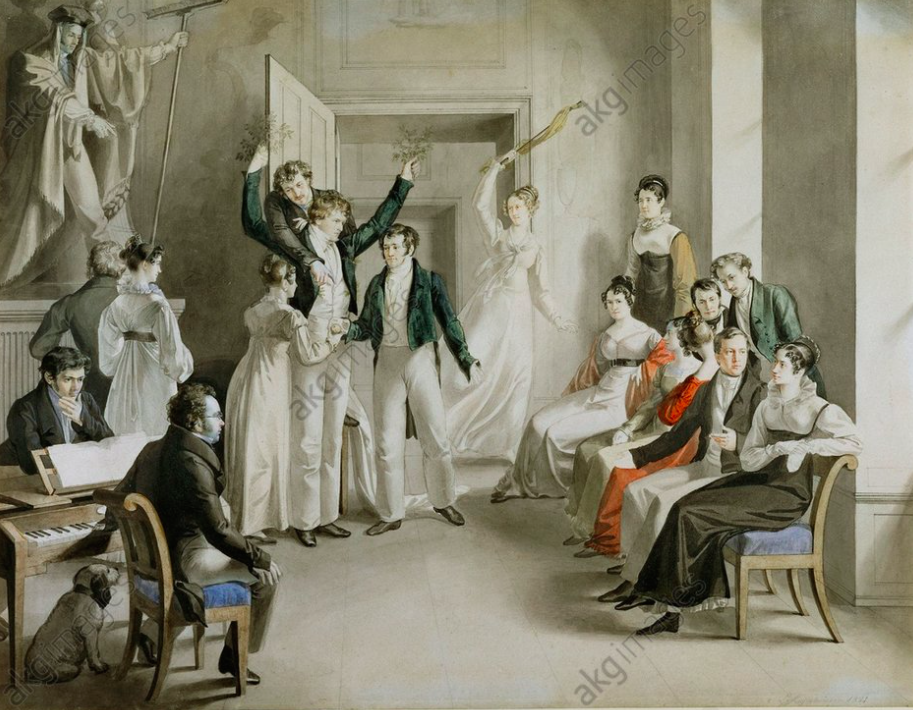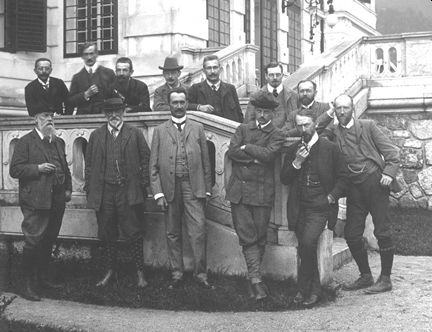The Kupelwieser, originally Kuppelwieser, were and still are a family of farmers established in the South of the Tyrol. Even nowadays you find, for instance, the “Kuppelwieser Alm” and a winery in the Ulten Valley near Meran. At that time, all the farmers were also organized in shooting clubs and, as is common in the Tyrol, so confident that some, including the Kupelwieser, were even allowed to use their own coat of arms. In the War of the Spanish Succession, according to oral tradition, a Josef Kupelwieser was a captain or mercenary of the emperor and was then generously paid off. The allied Bavarians and Frenchmen had put the screws on the Tyrolese, but they could defend themselves heroically. (The Bavarian “Rummel”)
With that compensation in his pocket, he moved to Vienna around 1730 with two sons as appendage. One, Johann, became an engineer, worked on the construction of the “Wiener Neustädter Channel” and then founded an iron, copper and tableware factory in Piesting with his brother Josef. Johann, as mentioned before, was also the father of Leopold, the later famous painter who, on October 17, 1796, first saw the light of day at the foot of the Starhemberg ruins. As handed down in the family – after elementary school and two classes of Latin school – the drawing teacher of the Archduchesses in Baden discovered his talent by accident and advised the parents to promote it. He came to the Royal Academy of Fine Arts in 1809. When his father died in 1813, Leopold was soon forced to make a living himself – he painted tin cups for the tableware factory and increasingly worked as a portrait painter.
Leopold Kupelwieser and the Schubert circle
In Vienna, he came into contact with the “Nonsense Society“, the Bohemian circle of artists around Franz Schubert and Franz Schober, to which Moritz von Schwind, Baron Doblhoff and many more belonged.
One of his brothers, Joseph Kupelwieser, wrote the libretto for Schubert’s heroic-romantic opera “Fierrabras”. Thanks to the emperor´s wife Karoline Auguste, Leopold was allowed to draw the emperor Franz I, who generally did not like to sit portrait, in a realistic way. He succeeded so well that as a then respected painter he received many other orders. He also later benefited from his “imperial studies”, since he made numerous copies to earn money. He himself was brisk on the “Draisine”, the forerunner of the bicycle. The Schubert circle, the trips to Atzenbrugg, the castle which belonged to the Schober family, the crazy playful theatre plays (“Adam and Eve in Paradise”, where Leopold Kupelwieser played because of his size, the tree around which a lascivious lady looped around to hand Eva the apple) are not only pleasant memories, but also known from general historiography, since he recorded everything in pictures. Less known are the extravagant festivals, followed by sexual escapades with the famous “Grabennymphen“, chambermaids and laundry girls. Schubert’s relationship with the maid Pepi Pöckelhofer and the question of when and where he got syphilis remained largely taboo. “I feel like the most unfortunate and the most miserable person in the world”, he wrote to Leopold Kupelwieser in 1823. In 1827 he composed the melancholy “Winter Journey”, and in 1828 he died.
At the beginning Leopold Kupelwieser was involved everywhere and, like his brother Josef, was said to have been a notorious womanizer; coded hints can be found in some of Schubert’s songs.
He also made sketches of several parts of the city (Spittelberg, Rossau, etc.) with allusions to those, in which all the “lustful” places are marked. For example, a prostitute was called a “fortress” that had to be stormed in order to celebrate a “festival” inside…
Leopold Kupelwieser as a conservative church painter
In 1823 Leopold Kupelwieser accompanied a Russian nobleman to Rome. He stayed there with the Nazarenes, raved for Raphael and Fra Angelico and, although he wanted to stay there only for a few months, did not return to Vienna until August 1825. He worked intensively and started a family in September 1826 with his fiancée Johanna Lutz, who was seven years younger and the daughter of a civil servant (motherly closely related to the Sonnleithner family). He went from one extreme to the other, completely gave up his erotic escapades and turned to sacred art. Between 1827 and 1845, Johanna gave birth to ten children, two of them died in babyhood, three daughters and five sons survived.
In 1831 Kupelwieser submitted a position at the academy and was appointed “Correktor” for historical painting, with an annual salary of 800 guilders. Although he worked a lot and had numerous orders for portraits, frescoes and altarpieces, he was never able to escape the very modest circumstances and died in 1862 as a poor man. A grant application for his sons, submitted after his death, posthumously confirmed that he had no property and that his widow was burdened with the maintenance of eight underage children. Because of that lack of resources, the academy granted widow’s and orphan’s pensions, and the emperor, who knew how to remember Leopold’s talent as a painter, provided Johanna with scholarships for the male children upon her request. So it came about that Carl was able to study law, Paul, Franz and Max decided in favour of the “Montanistik” in Leoben- then the “Silicon Valley” of Europe, in which all information about planned railway projects came together.
Paul Kupelwieser – who had always dreamt of owning an island – Brioni
Paul was born the second son of Leopold in 1843 and studied from 1861 to 1865 with his brothers Franz and Max thanks to a scholarship at the “Leoben Bergakademie”. He then worked as an engineer for Rothschild in the iron works in Ternitz, Teplitz and Vítkovice, the latter he later led as director. After differences with Rothschild, he left his job and in 1893 bought the neglected Brioni Islands from a Venetian for 75,000 guilders.
Decline through war, crisis, and fascism
After the First World War, the Brionian Islands fell to Italy. The family fortune had disappeared and a joint stock company with English and American partners was founded. The sophisticated character was preserved, a golf course and polo area were built, everything adapted to the spirit of the time and the changed target audience. A new ship connection to Pula brought additional frequency. The stationed Italian soldiers, on the other hand, caused unrest, poached a lot and bullied the Kupelwieser family.
Karl/Carl/Carlo – Paul’s eldest son decided to commit suicide with a hunting rifle after the global economic crisis caused stock losses and a lightning strike that killed all polo horses. His first wife had left him for an American admiral years earlier, and in his second marriage he had been married to the Croatian postmaster’s daughter Elda Lonzar, so that his inheritance passed to her, his younger brother Leopold “Lony” and a sister. At his funeral, fascist guard militias carried the coffin to pay their last respects. It is still buried in a quiet clearing in the Brioni forest.
Lony subsequently left his wife Annie Hiller-Kupelwieser and also had to leave behind his daughters Pussy, Mausi and Annelie. Violent inheritance disputes finally ended in a comparison that made the three girls heiresses to Brioni while their mother was still alive. Annie Hiller continued to run the business on her own, the shares lost more and more value, and the island came under the trusteeship of the Bank of Verona. At the same time, a lawsuit was brought against the Italian state for the repayment of a loan from the monarchy. However, the positive verdict for the family was annulled by Mussolini, which further drastically worsened the financial situation.
Maria “Pussy” Kupelwieser married Manfred I Mautner Markhof in 1926 in Brioni, who despite intensive efforts and his relationships he was unable to achieve anything against Mussolini.
“Baronessa Elda Lonzar Kupelwieser de Brioni”, the widowed second wife of Karl Kupelwieser, tried after the war from Trieste and Rome to attempt to recover claims as head of an “Interministerial Commission for Expropriated Goods in Istria”, but was unable to do so as well.
Carl Kupelwieser and Bertha Wittgenstein – the Lunz-Kyrnberg story
Carl, Leopold’s eldest son, had studied law in Vienna and ran a law firm. As a “smart dandy”, he was welcomed in the noble Viennese society of that time. So he came into contact with Ottilie Ida Bertha Wittgenstein, with whom he married. Insider knowledge thanks to his brothers, who worked in the iron sector, and good contacts with the Vienna Stock Exchange made it possible for him to buy iron shares at the right time. So he quickly made a lot of money not only through marriage, but also through speculation. Like many “noveau riche” of that time, he wanted to do the same as the nobility – so, in 1897, he bought a hunting estate for 175,000 guilders, the estate “Seehof-Hirschthal”, an estate in Lunz am See, and expanded his area by purchasing around 30 small farms. Bertha brought the “Kyrnberg” estate in Pyhra near St. Pölten into her marriage as a dowry and also turned it into an agricultural model farm. On a trip to France, she scraped cheese cultures off the wall – in a kind of “industrial espionage” – and subsequently produced the Kyrnberger Gervais cheese, which was particularly popular in Vienna. Even Gauleiter Hugo Jury later wanted to incorporate that patent. Carl and Bertha liked to share their wealth and donated a lot to the general public: the agricultural school in Pyhra, the hospital in Scheibbs, the radium institute in Vienna and the biological station in Lunz am See. They were also great promoters of the arts. She and the Wittgenstein family still owned many villas in Pörtschach, where Johannes Brahms often stayed, and Bertha, as his “fan”, designed a bust for him in the “Leonstain Castle”. There, Carl had also welcomed participants of the international biologists’ conference that took place in Graz at the end of August 1910, led by his son Hans, who also visited the biological station in Lunz am See, founded in 1905, and then went on to Brioni in early September 1910. Brahms preferred the lakeside villas because there were too many snakes in the old castle. Bertha also had a villa built on Brioni based on Karl Wittgenstein’s plans. The villa itself no longer exists, only a balustrade by the sea, with a view of Pula, has remained. Bertha was a very unconventional woman and kept giving the finest anecdotes to smile about. For example, on a trip to a social event in Vienna, she had to change due to a delay in her train compartment. The presence of a strange male passenger did not prevent her from doing so – we will never find out whether he was really asleep or just pretending to be. She was also one of the first female automobile drivers, but she could not escape her fate at the end of the day. In 1923 she died in a traffic accident due to a technical defect – she could not make the corner on the notorious “Neunkirchner Avenue”.
In the period of inflation after the First World War, the Kupelwieser family lost part of their great fortune, they could only keep the “Seehof-Hirschthal” and “Kyrnberg estates, and also suffered during the National Socialist regime for so called “racial” reasons. Later on the manor in “Lunz am See” was owned and managed as a thriving forest company by Dipl. Ing. Hans Peter Kupelwieser, the grandson of Dr. Carl Kupelwieser. He died in 2013 at the age of 91. Since then it has been managed by the dedicated forester Bernd Puritscher for the heirs Hans and Paul Kupelwieser, Elisabeth Jungwirth, Johanna Eder-Kovar and Heinrich Kovar.
Hans Kupelwieser and Polya Gorodetzky – the family in distress and the manors in sight of the military and the nazi-“bigwigs”
After Carl’s death (1925), his son Hans continued to run the biological station in Lunz for a short time. Then it was transferred 50 % to the “Austrian Academy of Sciences” and 50 % to the “German Kaiser Wilhelm Society”. In winter 1933, the biological station measured in a sinkhole in the mountains by temperature inversion minus 53 degrees, which should have fatal consequences, since Lunz was later classified as an “important place for the war”. Hitler personally is said to have ordered the engine oils for the tank engines for the Invasion of the Soviet Union to be tested for their cold resistance there. Because of that on the other hand the region was made a secret military training area and many hunting lodges, alpine huts and parts of the castle were confiscated.
Hans married the Jewish-born scientist Polya Gorodetzky from Kishinev in 1905, whom he met while studying in Leipzig. Since the estates Seehof and Kyrnberg were in debt due to the economic crisis and previous mismanagement, Kyrnberg had to be “sold” to the “Gauleiter” under pressure. The payment of the purchase price is no longer traceable. Fact is that the property in Lunz remained in debt long after the war, although the sale of one property should have also relieved the other of debts.
The Wittgenstein relatives also had to show “ancestor passes” and it was only then that they found out that they almost entirely came from assimilated Jewish ancestors. Finally, they transferred all of their assets from Switzerland to the “Reichsbank”, at least to be declared “mixed bloods”. As a result, Hans was “only half a Jew” due to his mother Bertha, but his children Christine (married Geißlhofer), Maria and Hans-Peter – due to their mother Polya – were “¾ Jews”. The interventions of the “Gauleiter” of “Niederdonau” and that of the head of the biological station Prof. Franz Ruttner made it eventually possible for them to have their faces “measured” and thus escape the deportation at the last moment, because they were classified as Aryans. The family escaped the concentration camp only with luck. Hans Kupelwieser had died of a heart attack in 1939, and Polya had moved back from Pyhra to Lunz. She had given up her inheritance in favour of her children and hardly dared to leave the castle, among all the military and SS soldiers who tested the engines in the mountains. Only during the Russian occupation she could – because she spoke Russian fluently – negotiate with the commanders and thus prevent attacks by the soldiers against the civilian population.
Hans Geißlhofer – The “Caritas” and the “Der Kältesee” (a secret Nazi cold test station)
Hans Geißlhofer (*1950) was born as the son of Christine Kupelwieser in “Seehof Castle” in Lunz and grew up in Auern/Phyra on his 500-year-old father’s farm. After graduating from high school in St. Pölten, he began studying cultural engineering at the “BOKU” in Vienna in the legendary 68’s year, but later switched to spatial planning and land use planning. In 1977 he started an unprecedented career in the development aid sector by going to Cameroon for two years. Then he went to the United Nations in Guinea Bissau, followed by Senegal, from where he later planned projects for the development of the “Entwicklungswerkstatt Österreich”, and where he was eventually to find a new temporary home. From 1990 to 1994 he was coordinator of the Austrian development cooperation for the Sahel region based in Dakar. He shot documentaries about Senegal with “ARTE” and presented his “CARITAS” projects in various “ORF” shows (“ZIB 2” and “ORIENTIERUNG”).
He did not only submit applications to the Arbitration Panel for restitution in kind and, as a book author, immersed himself deeply in his own childhood memories, but he also brought family secrecies to light with the help of persistent research. As a guest on the program “Erlebte Geschichte”, he talks about the many branched lines of his ancestors, to whom he devotes attention in his book “Der Kältesee”/“A Secret Nazi Cold Test Station”.
Hans Geißlhofer on the trilateral cultural heritage Brioni-Lunz-Kyrnberg:
“Today the story of Paul Kupelwieser is well presented to the tourists in Brioni. But there are still grey areas which would be worth a more precise study. At least, this story should be, in the interest of all three countries: Austria, Croatia, and Italy which now, after a painful history, come together in the context of the European Union, critically reappraised. Such a world heritage site requires a trilateral culture of remembrance. Here the EU could prove what such a remembering culture is worth?”





